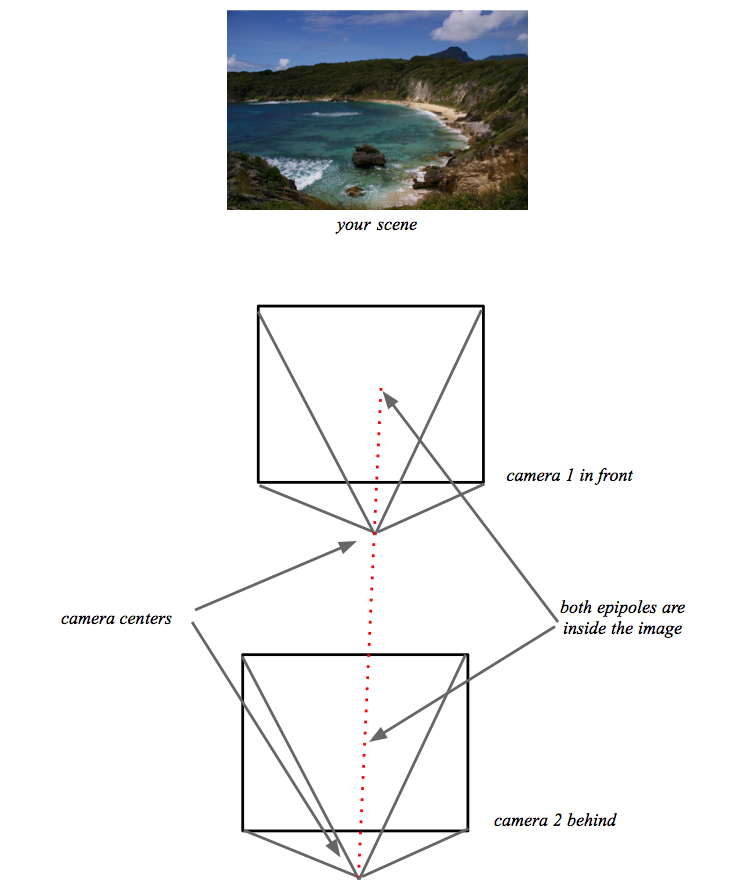This forum is disabled, please visit https://forum.opencv.org
 | 1 | initial version |
This is actually simple :)
If you look at the relative motion between the 2 images, the second camera/image has been taken in front of the other one.
So as expected the second camera project in the middle of camera one (fig 1 left).
Similarly Camera 1 projects in the middle of camera 2. Remember that projective geometry is not oriented the front and back is the same. Negative depth does not affect the projection.
Maybe a simpler way to visualize this is to draw the line between you camera center. They will both cross the camera planes has one camera is in front of the other. Therefore each epipople is in the image.
If this does not answer you question yet I will try to draw something for you.
 | 2 | added a small figure to explain |
This is actually simple :)
If you look at the relative motion between the 2 images, the second camera/image has been taken in front of the other one.
So as expected the second camera project in the middle of camera one (fig 1 left).
Similarly Camera 1 projects in the middle of camera 2. Remember that projective geometry is not oriented the front and back is the same. Negative depth does not affect the projection.
Maybe a simpler way to visualize this is to draw the line between you camera center. They will both cross the camera planes has one camera is in front of the other. Therefore each epipople is in the image.
If this does not answer you question yet I will try to draw something See figure for you.more detail